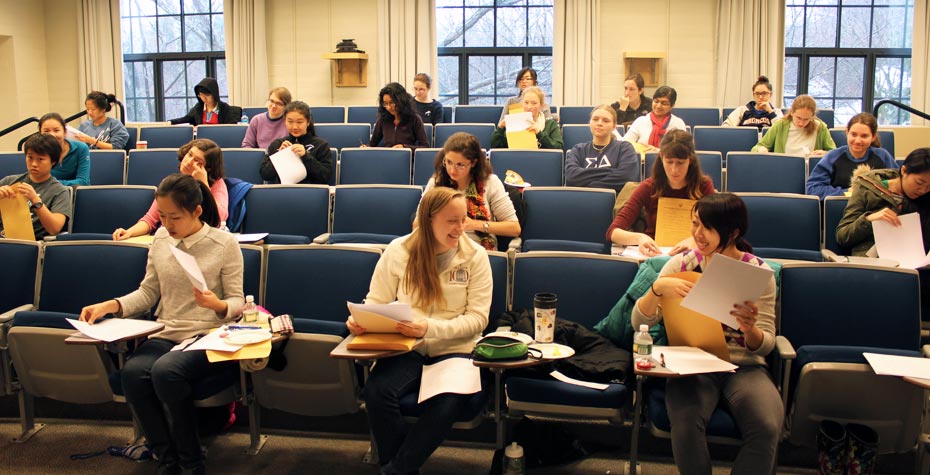30 Students Take on Notoriously Difficult Six-Hour Math Exam

Six hours, twelve questions, and one median score: zero. To many, this combination may sound like the makings of a nightmare test-taking experience; however, for several Wellesley students, the aforementioned represents another challenge to be conquered with the power of a logical and creative mind.
The William Lowell Putnam Mathematics Competition (commonly referred to as the Putnam exam) is a competition geared toward testing students’ ability to problem-solve. On the first Saturday in December, students are given six hours to complete 12 intense mathematical questions. For example, one past Putnam problem reads:
In the Parliament of Sikinia, each member has at most three enemies. Prove that the house can be separated into two houses, so that each member has at most one enemy in his own house.
Andrew Schultz, assistant professor of mathematics at Wellesley, has helped students prepare for the Putnam exam since he arrived at the College in 2010. Schultz took the exam several times throughout his own undergraduate career at Davidson College, but gained a greater appreciation for the test after participating in a series of popular problem sessions put on by his graduate school advisor. Schultz’s major takeaway was the exam’s accessible way of making math fun. Says Schultz, “It’s this test that, if you take it and you get a zero, you’re normal. If you take it and get a 10 you get something really great.”
But what makes a strong Putnam candidate? According to Schultz, boldness is key. While most students who sign on for the Putnam exam are pursuing traditional math-related majors, Schultz asserts that such boldness isn't limited to them. “One of the things I’m interested in doing in the future,” he says, “is getting more people interested [in taking the exam]. There is really no reason why someone in, say, American Studies couldn’t find out about this and find it interesting.”
Rebecca Scanlon ’15 will be taking the Putnam for the fourth and final time this year. She says, “I decided to take the exam my first year because I started going to Professor Schultz's practice seminars for the exam and I really enjoyed working on the problems. Knowing that the median score is a zero makes practicing for it really fun and rewarding because figuring out even a single problem is really exciting.”
First year Madeleine Barowsky echoes similar sentiments, and plans on taking the exam again later on in her undergraduate career. Says Barowsky, “I decided to take the Putnam because I was intrigued by the sample problems, and I enjoy a good challenge.... I plan on taking the exam again once I have more math under my belt, and it can only help me to be exposed to the style and content as often and early as possible.”
According to Putnam veteran Sharon Shiao ’16, the exam’s six-hour length is less intimidating than one would think: “Even though six hours seemed long when I first heard about it, in the real test—because of concentration on problem solving and thinking—time just slipped away. It was exciting at the same time because we had three hours (for each part) to slowly think about the problems and try anything we wanted.”
Adds Barowsky, “I think the Putnam is a good reminder that math is not always computational. It also forces you to call upon creativity to solve problems.”
—Katelyn Campbell '17
